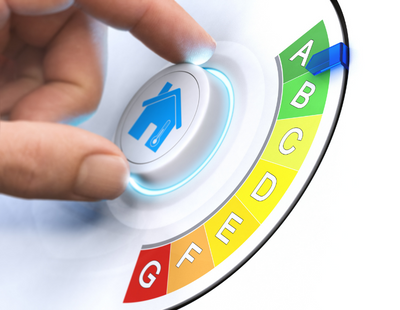Furthermore, energy efficiency is increasingly becoming a necessity both due to the cost of living and the climate emergency. We know from our own research that it’s something our clients take very seriously, whether they’re buying, selling, letting, or renting. According to our recent survey, almost three quarters (70%) of respondents nationwide would like their property to be more eco-friendly. More than half (56%) said that they would specifically seek out a property with these qualities, while two-thirds (66%) revealed they would choose a property with eco-friendly features to buy or rent, over one without.
Although landlords may welcome the opportunity not to spend on substantial work while mortgage rates remain high, in many cases it will be prudent to take the long view: any work carried out now will help with future regulations, as well as reducing your carbon footprint, and providing a more energy efficient home which could attract a higher rent.
Green Building Renewables, concerned that fewer than half of landlords were prepared for the proposed introduction of MEES, carried out some research which indicated the changes being considered by landlords. In order of preference, these included new boilers (37%), insulation (36%), solar panels (29%), LED lighting (29%), and heat pumps (23%).
The Energy Saving Trust provides some very useful information on the various means of achieving energy efficiency, with information bespoke to the size of a property. It advises, in relation to a range of potential improvements, what a typical installation would cost, how much can be saved annually in energy bills and how many kilograms of CO2 emissions can be saved, based on a detached house, semi detached house, mid-terrace house, detached bungalow or mid-floor flat.
The number of options available, along with the knowledge that accompanies it, is constantly growing – did you know, for example that there are at least eight types of heat pumps available for use in houses - air source, air-to-air, cascaded, exhaust air, ground source, hybrid, solar assisted, water source?
The relative benefits of the range of options available (which include cavity wall insulation, double glazed windows or energy efficient doors, draught-proofing gaps and cracks, energy efficient boiler, LED light bulbs, loft insulation, smart meters, solar panels, solid wall insulation) depend on technical specifications such as wall types and planning restrictions (such as the building being in conservation area, or the property being listed), your reasons for making the change, your budget and whether you intend to carry out the work yourself or use a professional.
As the National Residential Landlords Association said shortly after Sunak’s U-turn, with energy use in residential properties accounting for around a fifth of UK carbon emissions, the private rented sector has an important role to play in reaching Net Zero.
And making the changes can be financially prudent: Legal & General research shows that 13% of renters are willing to pay a premium for a low carbon property - allowing landlords to recoup the costs. With tenants’ bills reduced by £276 a year on average, landlords can recoup the initial outlay and derive longer term benefits from their investment.
There is evidence, too, that investing in energy efficiency is a wise investment.
According to Buy Associaiton, over half of portfolio landlords use EPC ratings as an investment tool, buying properties rated D or lower, and using the EPC structure to determine the necessary renovations to generate a higher resale or rental price. The figure is higher among those with the most properties, decreasing in line with the number of properties owned. It is substantiated by research from Hamptons in 2022 which revealed that property investment trends are leaning towards more energy-efficient buildings, with 50% of investors buying properties rated A-C, up from 39% in 2021 and 33% in 2020.
Similarly, green mortgages can be an astute financial investment due to the preferential rates that they offer.
Whether you wish to put additional investment into your portfolio, gain a higher monthly income, help your tenants or the increasingly necessary and widely acknowledged aspiration to meet net zero, increasing the energy efficiency of a property is undoubtedly of value.
* Kim Lidbury is Group Director (Property Management) at Leaders Romans Group *
We're excited to announce that we're working on building a shiny new website for readers of Landlord Today! As part of this process, commenting on articles will be temporarily disabled. We look forward to sharing our new and improved Landlord Today website with you shortly!








.png)

(1).png)








